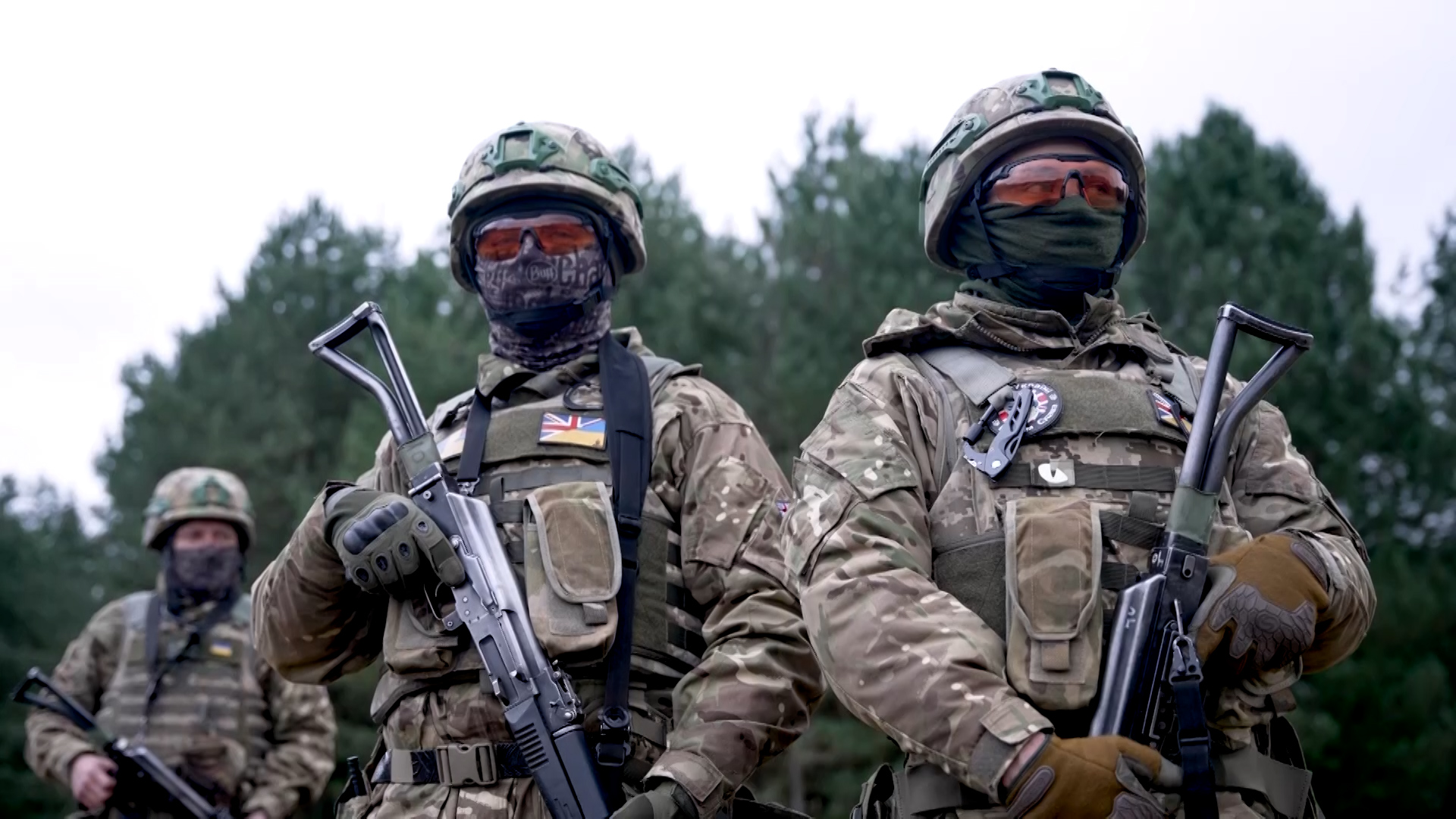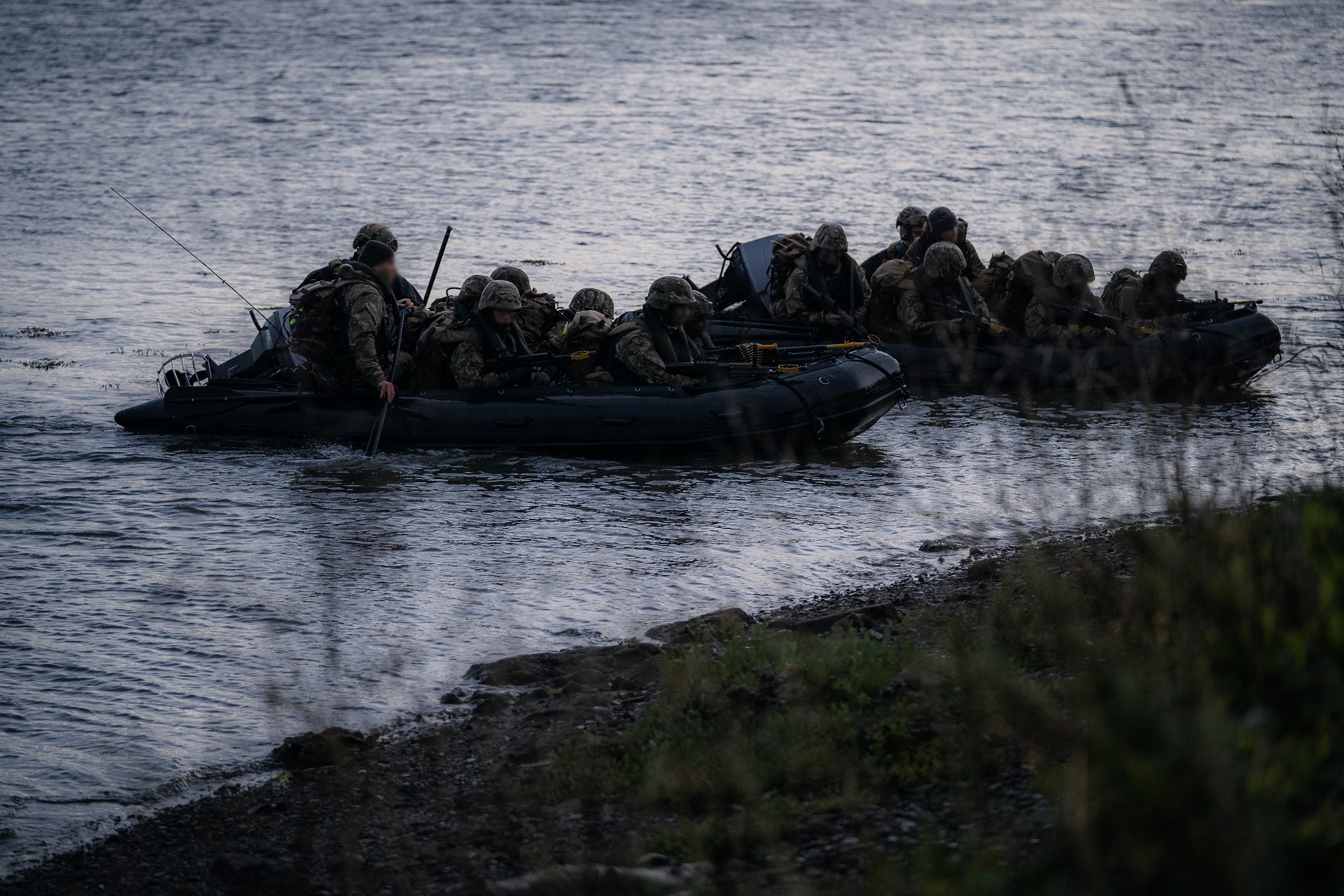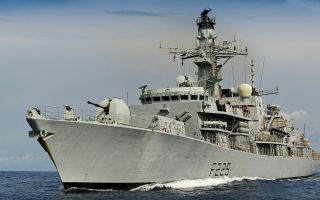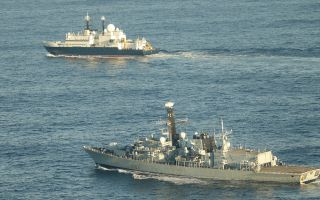Interflex turns three: How UK-led training is shaping Ukraine's defence
It is now three years since the UK launched Operation Interflex, a large-scale, multinational effort to train Ukrainian troops here on British soil.
Since then, more than 56,000 recruits have passed through training centres across the country, and around 1,000 British personnel are deployed on the mission at any one time.
I've visited and filmed Interflex training numerous times, but this was the first time I had seen the farewell ceremony that the British-led training teams organise for each departing cohort of Ukrainian soldiers. It was an emotional thing to witness.
Experienced British troops – many of them veterans of Iraq and Afghanistan – embraced these young Ukrainian men, soldier to soldier, as they boarded their coaches for the long journey home.
As the buses left camp, British and allied soldiers lined the route.
An Irish Guardsman, dressed in ceremonial tunic and bearskin cap, walked ahead of the vehicles, accompanied by Seamus, the regiment's much-loved mascot.
Understandably, the MOD asks us to conceal the location of this training and the identities of anyone involved.
We also blur the faces of Ukrainian soldiers in case Russia's intelligence services trace their identity and, by association, their families.

Many of these Ukrainian men arrived as civilians with no prior military experience.
They leave as trained soldiers. And with Ukraine's desperate shortage of manpower, they can often be in combat within 24 hours.
"It's my ninth lot of students that I've seen set off, and it's kind of a similar feeling every time," Lance Sergeant Lee of 1st Battalion, The Irish Guards, told me in a soft Irish accent.
"And because this was a command course, it's not just the 40 guys on the bus. Each one of them goes back to look after 12 more people. So, that's where it weighs quite heavily on your head when you're sending them away, the seriousness of it."
Originally conceived as a five-week basic infantry course, Op Interflex has continuously adapted to reflect the changing battlefield in Ukraine, where the innovation cycle is just a matter of weeks.
In East Anglia, trainees are exposed to realistic battle noise, simulated amputations and even animal organs to replicate the conditions they could face in combat.
What began with weapons handling, patrol drills, first aid and training in the Law of Armed Conflict has expanded to include live fire exercises, counter-drone warfare, urban combat and even trench warfare simulations.
Alongside the infantry course, there are now two other programmes: leadership training, which teaches soldiers how to command a section and later a platoon, and instructor training, where Ukrainian troops learn how to train their own.
There is also a course on mental resilience, to help Ukrainian officers detect signs of battle stress among their troops - many of whom have now been in combat for years.

"I think it's absolutely incredible to think that three years ago, when the conflict started, none of this was up and running," explained Lieutenant Colonel Ben Irwin-Clark, the Commanding Officer of 1st Battalion, The Irish Guards, the lead training team here.
"This was a relatively quiet backwater for British-only training. And we have built as a nation and as a coalition this amazing thing which now delivers this huge variety of courses to a huge number of people.
"Just to reflect on the sheer resilience and that offensive spirit of Ukraine as a country and of their armed forces — it's pretty awe-inspiring."
Op Interflex is a multinational effort, with 13 partner nations supplying instructors, including Canada, Norway, Denmark and Albania.
As well as infantry soldiers, training has also been provided to Ukrainian combat engineers, military medics, pilots and marines.
Between January and March 2023, Ukrainian tank crews also trained in the UK as Britain prepared to gift 14 Challenger 2s to Kyiv. At least two of those have since been lost in combat with Russian forces.
In a trench system, we watched as Australian soldiers showed the Ukrainians ways to counter Russia's gruesomely named "meat-assault" tactic.
The Russian army often sends waves of ill-equipped conscripts toward Ukrainian lines in the hope of overrunning them. Most are killed.
"It's not just us training them - it's also them training us," Major Tom from the Australian Army told me.
"These guys have a massive amount of combat experience. They're really used to using drones, defensive positions and fighting in trenches.
"So it's a two-way street. As much as we're teaching them, they're teaching us."
Kit issued to Ukrainian trainees:
Each Ukrainian soldier on Interflex is issued up to 75 individual items of kit, worth around £4,500.
These include:
:: Personal protective equipment including helmet, body armour, eye protectors, ear defenders, pelvic protection and individual first aid kits
:: Field uniform and boots
:: Cold and wet weather clothing
:: A bergen, day sack and webbing
:: Additional field equipment including a poncho, sleeping bag and entrenching tools








